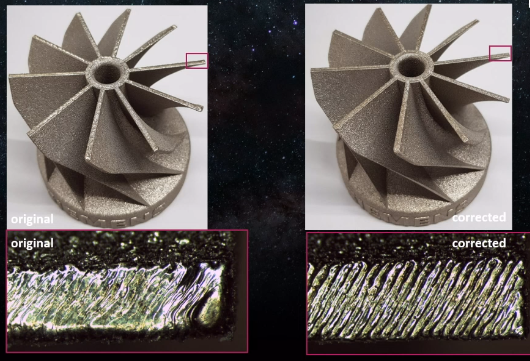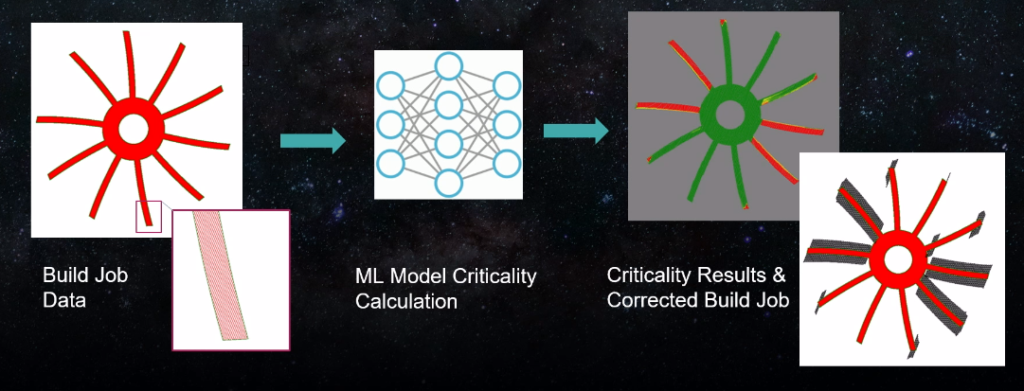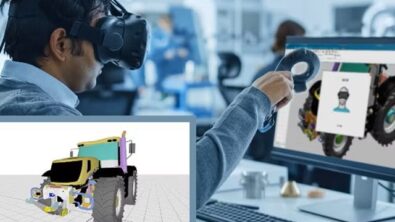Path optimization for laser powder bed fusion printing

FormNext may have already passed, but with so much to learn about industrial additive manufacturing (AM) it might be time to revisit some of it or take a first look at what this manufacturing segment has to offer. Blake Snodgrass and myself will be highlighting some key presentations from Siemens Additive Manufacturing Summit at FormNext Connect, for those looking to learn how AM is changing industrial manufacturing.

Another interesting FormNext presentation is Dr. Daniel Reznik’s discussion of the Siemens AM Path Optimizer for laser powder bed fusion (L-PBF) applications, from his work as principle engineer at Siemens AG. Due to local over-heating and expanding melt pools while printing, much more scrap is being produced in a process that is meant to eliminate scrap. This added cost of multiple prints has kept many companies from expanding their use of additive or kept them from adopting it at all.
Unlike design errors, deformations due to local over-heating are a technological problem, the machines do not have the granularity to only melt the required portions of the powder bed. But all is not lost, this is the reason for AM path optimization, a software solution to a hardware problem.

Unfortunately, it is not as simple as simulating the entire toolpath as one might do for a CNC machined part as the path for even a small part can be many kilometers long. That eliminates the ability to simply conduct a finite element analysis (FEA) on the tool path as this would take far too long. Instead the AM path optimization is run with a FEA-trained machine learning (ML) model to enable fast calculation of overheating criticality of the complete laser toolpath.
In the ML approach, the expected areas of distortion and deformation are corrected through the introduction of inter-vector pauses. This works similarly to inter-pass cooling for multi-pass welding. The output is an adjusted toolpath description with an extremely reduced probability of overheating as the part is allowed to cool before a new layer is added above it, which re-heats the metal below. An added bonus of re-writing the toolpath file is that the file format can also be changed to allow printing on different printers.
Machine learning
Due to the high number of variables in AM practices in general, the ML training must be done for each material-parameter combination before it can be implemented in the application. That consists of roughly 500 finite element model calculation and 3000 CPU core hours to train the model. But to reinforce the model a calibration print is made to ensure the ML model is working as expected for the material set on which it is being trained.
Application
Now that the ML model has been trained, it can be used on the build job data to calculate criticality on the build. From that information the adjustments are added to the build file, but since there are often no pause functions built into the printer the toolpath instead moves away from the print area to allow adequate cooling. A simplified example of the process can be seen in the figure below.

Expect it soon
Siemens’s AM Path Optimizer will be available soon to beta customers, through integrations with NX and NX CAM. There will be two trained models at launch – for Inconel 718 at a 40 µm process node and Ti6Al4V at a 60 µm process node, but it will also come with a workflow for rapid development of new material-process models.
For more information on how AM path optimization will change the world of industrial additive, make sure to register for the Siemens Additive Manufacturing Summit at FormNext Connect and watch Dr. Daniel Reznik’s full presentation, along with many other in-depth presentations on new and upcoming technologies for additive manufacturing.
Siemens Digital Industries Software is driving transformation to enable a digital enterprise where engineering, manufacturing and electronics design meet tomorrow.
Xcelerator, the comprehensive and integrated portfolio of software and services from Siemens Digital Industries Software, helps companies of all sizes create and leverage a comprehensive digital twin that provides organizations with new insights, opportunities and levels of automation to drive innovation.
Also, for more information on Siemens Digital Industries Software products and services, visit siemens.com/software or follow us on LinkedIn, Twitter, Facebook and Instagram.
Siemens Digital Industries Software – where today meets tomorrow.


